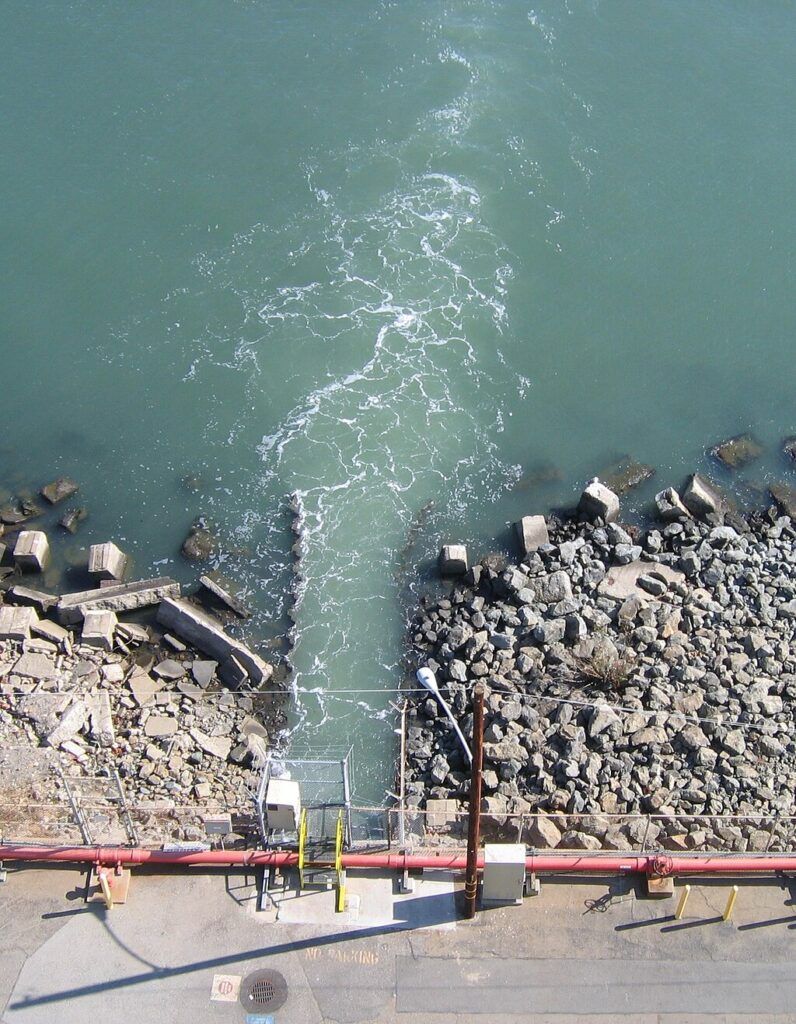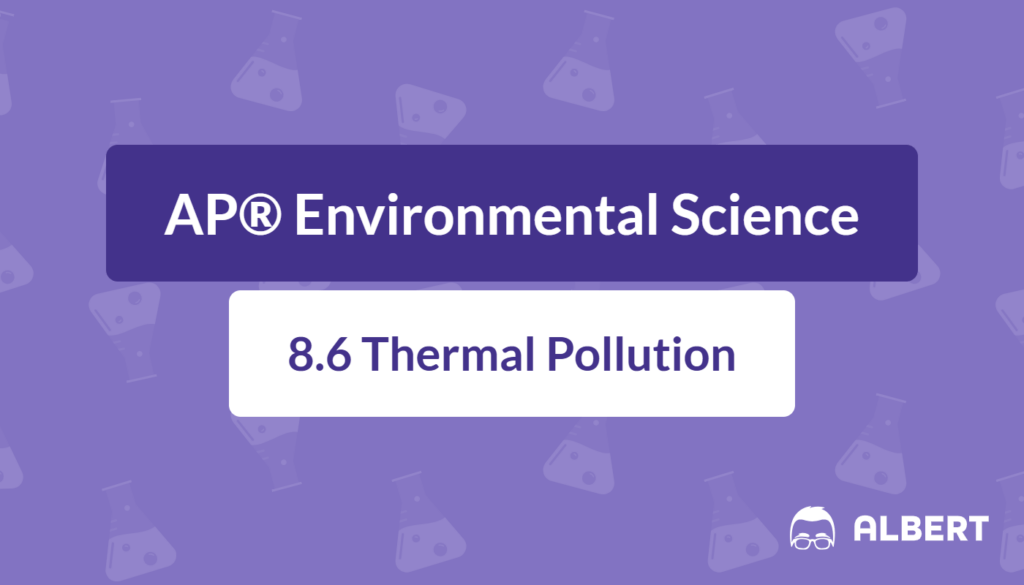What We Review
Introduction
Thermal pollution may not always gain as much attention as the carbon cycle or renewable energy innovations, yet it plays a critical role in shaping the health of aquatic ecosystems. Heat released into water can produce negative effects on organisms. This review breaks down the basics of thermal pollution, outlines its impact on aquatic life, and provides a clear example of how temperature variations relate to dissolved oxygen concentration. By exploring both causes and potential solutions, students can develop a comprehensive understanding of this key environmental concern.
Thermal pollution refers to an increase in water temperature due to human activities, such as industrial processes or power generation. Although it is sometimes overshadowed by more familiar topics like the population growth model, it significantly affects aquatic environments. Indeed, temperature shifts drastically influence factors like separated habitats, species distribution, and oxygen availability.
Thermal pollution is significant for several reasons:
- It can reduce dissolved oxygen in the water.
- It may force aquatic species to migrate or perish due to unfavorable conditions.
- It often coexists with other environmental issues, such as eutrophication, compounding the damage to ecosystems.
Therefore, understanding how thermal pollution works and how to mitigate it enables informed decision-making to protect aquatic ecosystems.
What Is Thermal Pollution?
Definition of Thermal Pollution
Thermal pollution occurs when waste heat from industrial processes and other human activities elevates the temperature of a body of water. Unwanted heat release can negatively affect organisms, disrupting ecological balance and harming biodiversity. Sources include power plants (both nuclear- and fossil-fueled), manufacturing facilities, and urban runoff from heated surfaces.
How Does Thermal Pollution Occur?
Thermal pollution usually results from the following processes:
- Power Generation: Many power plants use large amounts of water for cooling. After absorbing heat, this warm water often gets discharged back into rivers or lakes.
- Manufacturing Activities: Factories that use water in their cooling systems may inadvertently raise the water’s temperature.
- Deforestation and Erosion: The absence of shade near streams and rivers exposes water bodies to direct sunlight, naturally raising their temperature.
- Urban Runoff: Surfaces like asphalt become extremely hot under direct sun. When rainfall or stormwater washes off these surfaces, it transfers heat into nearby waterways.

Effects of Thermal Pollution on Aquatic Ecosystems
Aquatic ecosystems, which include oceans, lakes, rivers, and wetlands, are highly sensitive to temperature changes. These systems depend on stable temperature regimes to maintain species diversity and ensure that organisms thrive. Thermal pollution can lead to:
- Reduced dissolved oxygen (DO) levels, affecting fish survival.
- Increased metabolic rates in aquatic species, which might accelerate life cycles.
- Alteration of reproductive patterns, since some organisms depend on specific temperature cues.
- Displacement of species that cannot adapt to temperature fluctuations.
In extreme cases, ecosystems may collapse if enough key species die out or migrate. Therefore, it is crucial for students to appreciate how even minor temperature changes produce broad impacts.
How Temperature Affects Dissolved Oxygen
A vital concept in AP® Environmental Science is the relationship between temperature and dissolved oxygen in water. Warm water simply cannot hold as much oxygen as cold water, and this phenomenon underlies many negative consequences of thermal pollution.
Role of Dissolved Oxygen
Dissolved oxygen—often abbreviated as DO—refers to the oxygen gas present in water. Aquatic life, including fish, bacteria, and algae, relies on this oxygen for respiration. When DO levels drop, organisms may suffer from hypoxia (oxygen deprivation) or even die. Additionally, many non-fish organisms (such as insect larvae) are extremely sensitive to even slight decreases in dissolved oxygen. Therefore, a small change in water temperature can cause a ripple effect throughout the ecosystem.
Step-by-Step Example of Temperature’s Impact on DO
Consider a simplified scenario where a river’s natural temperature is 20 °C, and its dissolved oxygen concentration is approximately 9 mg/L. An industrial facility discharges heated water into the same river, raising the temperature to 25 °C. The new DO concentration might drop to about 8 mg/L due to lower gas solubility at higher temperatures. Then, if summer weather raises the river temperature further to 30 °C, the DO level may fall to around 7 mg/L. Although these numbers can vary by water chemistry, the pattern remains consistent: as water warms, \text{DO decreases}.
- Initial temperature (20 °C): DO ≈ 9 mg/L.
- Moderate increase (25 °C): DO ≈ 8 mg/L.
- Further increase (30 °C): DO ≈ 7 mg/L.
Each degree of temperature increase reduces the maximum possible dissolved oxygen, putting stress on aquatic organisms. Therefore, careful temperature management is critical to maintaining healthy aquatic environments.
Case Study: Thermal Pollution in Action
To illustrate the effects of thermal pollution, consider a hypothetical power plant situated along a river. The plant uses river water for cooling turbines and machinery, raising the temperature of the water by several degrees before returning it to the river.
- Warm Water Discharge: The plant releases water that is 10 °C warmer than the river’s normal temperature.
- Dissolved Oxygen Drop: The rise in temperature leads to a noticeable drop in DO from 9 mg/L to 7 mg/L.
- Fish Stress and Migration: Sensitive species (e.g., trout) experience stress at the lower DO. Migration to cooler upstream habitats becomes a survival mechanism. Species that cannot migrate might face population declines.
- Altered Food Web: Reduced DO alters the distribution of insects and plankton, which in turn affects higher-level consumers like birds and amphibians.
This change, though minor on a numerical scale, can drive a domino effect. Eventually, the entire aquatic ecosystem might lose biodiversity, demonstrating how thermal pollution has practical, long-term consequences.
Mitigating Thermal Pollution
Although thermal pollution poses challenges, there are strategies to reduce or prevent its damaging effects on aquatic life. Industries and communities can adopt the following approaches:
- Cooling Towers and Reservoirs: Before water returns to a river, it can be routed through cooling towers or holding reservoirs. This process allows some of the heat to dissipate into the air, lowering the final discharge temperature.
- Waste Heat Recovery: Power plants sometimes capture excess heat and use it for other processes, reducing the heat released into water bodies.
- Vegetative Buffers: Planting trees and vegetation along riverbanks provides shade. These buffers moderate water temperatures and promote higher DO levels.
- Regulatory Measures: Government agencies may enforce temperature limits on wastewater discharge. These regulations encourage industries to invest in technologies that protect aquatic ecosystems.
- Public Awareness and Conservation Efforts: Education campaigns and community engagement can foster more conscientious water use, preventing temperature spikes from runoff and other sources.
When successfully applied, mitigation measures preserve dissolved oxygen levels and reduce ecosystem stress. In this way, localized conservation efforts can complement broader steps to protect water resources, much like how renewable energy initiatives aim to reduce greenhouse gas emissions on a global scale.
Conclusion
Thermal pollution, although sometimes overshadowed by large-scale topics such as the carbon cycle, has profound implications for aquatic ecosystems. Unwanted heat released into water bodies can damage habitats by disrupting temperature-sensitive processes and lowering dissolved oxygen levels. Therefore, further understanding of how temperature affects the concentration of dissolved oxygen is essential for maintaining healthy fish populations and preventing broader ecosystem collapse.
Balancing industrial, residential, and environmental interests requires thoughtful strategies, innovative cooling methods, and effective regulatory policies. In addition, greater public awareness can facilitate meaningful initiatives to minimize thermal pollution’s effects. Through these efforts, communities can preserve aquatic environments, maintain biodiversity, and ensure that future generations can study and appreciate these valuable ecosystems.
Key Vocabulary
- Thermal Pollution: The introduction of heat into a water body, usually from industrial or power plant discharge, causing harmful temperature increases for aquatic organisms.
- Aquatic Ecosystem: A water-based environment (such as a river, lake, or ocean) containing living organisms that depend on stable temperature and oxygen levels.
- Concentration of Dissolved Oxygen: The amount of oxygen gas in water, typically measured in mg/L, critical for the survival of fish and other aquatic life.
- Eutrophication: A process where water bodies become overly enriched with nutrients (often from runoff), leading to excessive plant growth and low oxygen levels.
- Regulatory Measures: Legal limits and government policies put in place to control pollutants, such as allowable temperature thresholds for industrial discharge.
Sharpen Your Skills for AP® Environmental Science
Are you preparing for the AP® Environmental Science test? We’ve got you covered! Try our review articles designed to help you confidently tackle real-world AP® Environmental Science problems. You’ll find everything you need to succeed, from quick tips to detailed strategies. Start exploring now!
- AP® Environmental Science: 8.3 Review
- AP® Environmental Science: 8.4 Review
- AP® Environmental Science: 8.5 Review
Need help preparing for your AP® Environmental Science exam?
Albert has hundreds of AP® Environmental Science practice questions, free response, and full-length practice tests to try out.








